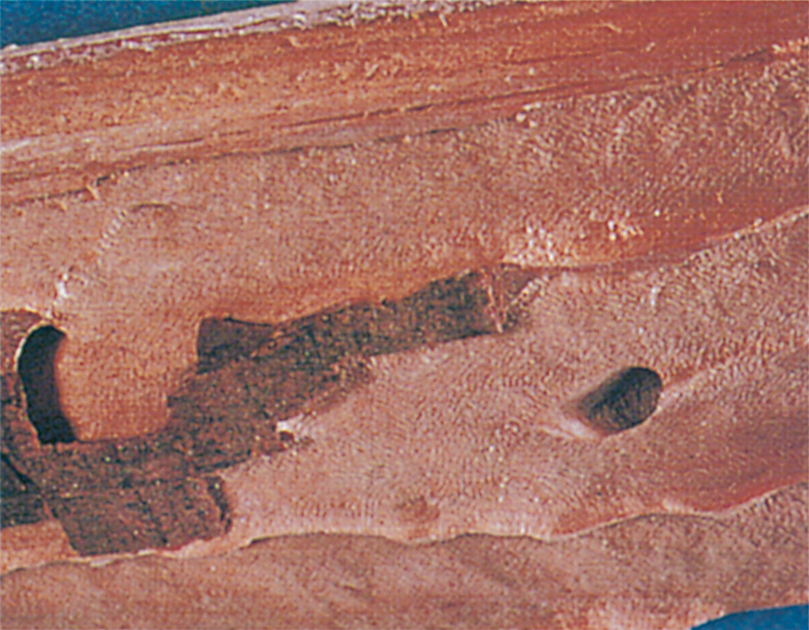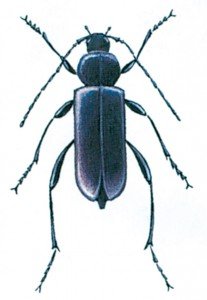Latin: Callidium violaceum
This is probably the species that is most commonly seen in the house; though not as serious a pest as the house longhorn (p. 135). It lays eggs exclusively in softwood, and only in dead or felled timber that still has its bark on. The larvae live in the growth layer and if the bark is removed their tunnels can be seen as broad furrows on the surface of the timber, with the marks made by their jaws showing as fine stripes.
Calladium violaceum is also known as violet tanbark beetle .
Larval development takes one to two years and when they are fully grown the larvae bore obliquely into the timber for a distance of 3-5 cm. At the bottom of this tunnel they make a chamber in which they pupate having sealed it with wood fibres. These pupal tunnels might suggest that the attack has also gone deep, but it is not difficult to test with a screwdriver that these end blindly, and as each larva only makes one such tunnel during its life this does not seriously affect the mechanical strength of the timber.
When the beetles emerge – normally in the spring – they wander back through the pupal tunnel and gnaw their way out through the bark, making an oval, smooth-edged hole (p. 118).

The larvae are often brought into the house with bark-covered timber, and are common in firewood (only softwoods), and in planks of pine or spruce that still have the bark on.
The larvae can thrive in timber until the whole of the layer between bark and wood has been used up, but the attack cannot spread to timber without bark. The best method of stamping out an attack is simply to remove the bark.
As in the case of Ernobius mollis (p. 122), this species may also cause damage when panels or roofing are placed up against bark-covered timber. When the beetles emerge they sometimes gnaw their way out through the covering panels.





